The telecom sector isn’t short on buzzwords — 5G, AI, IoT, edge. But there’s one market quietly undergoing massive digital change, and it’s barely getting the attention it deserves: UK care homes.
Yes, care homes.
While the sector might not seem like a hotbed of innovation, a perfect storm of regulatory pressure, infrastructure mandates, and care delivery reform is creating real, revenue-ready opportunities for telecom providers. And the best part? Most of the market is still stuck in the analog past — ripe for full-stack, long-term solutions.
The PSTN Switch-Off: From Pain Point to Entry Point
The UK’s analog phone network will shut down in 2025. For care homes, that’s not just a telecom issue — it’s a safety issue. Many still rely on traditional phone lines for internal comms, resident alerts, even emergency call routing.
Telecom firms have a chance to step in with more than just VoIP. The opportunity is to deliver:
- Hosted voice systems that work in real care settings
- Site-wide Wi-Fi to support staff mobility
- Resilient lines with fallbacks for emergencies
- Managed services that handle it all, end-to-end
This isn’t just a box-ticking exercise. Done right, it’s the start of a long-term partnership with a high-retention customer.
Care Is Going Digital — But Infrastructure’s Not There Yet
Regulators and funding bodies are pushing care homes to adopt digital tools: smart alerts, remote monitoring, virtual consultations. But without the right infrastructure, it all falls flat.
Telecoms can provide that missing layer:
- Integrated nurse call systems that route alerts to mobile devices
- IoT-ready networks to support fall sensors, acoustic monitoring, and more
- Bandwidth that can handle high-definition telehealth and secure data transfer
If you’re in the business of reliable connectivity and device enablement, care homes need you — urgently.
Telehealth Isn’t a Trend — It’s a Lifeline
GP shortages, hospital backlogs, and rising resident needs are forcing care homes to find new models of healthcare delivery. Telehealth is already becoming the norm — especially in larger homes or those working closely with the NHS.
This is where telecoms shine. High-speed broadband, secure video platforms, data compliance, edge computing — these aren’t just technical capabilities. They’re the infrastructure of tomorrow’s care.
And it’s all happening now.
Data Is the New Compliance
Here’s the kicker: care homes aren’t just interested in smart devices — they need smart insights. Staff want faster response times, managers want audit trails, and regulators want proof.
Telecoms that offer analytics dashboards, remote monitoring platforms, or integrations with care software (like Nourish or Person Centred Software) can unlock even more value. This isn’t about becoming a healthcare provider — it’s about being the digital backbone care providers can rely on.
It’s Not Without Friction — But That’s the Advantage
Sure, the care sector has challenges: tight budgets, legacy buildings, change fatigue. But those hurdles make it hard for smaller vendors to scale — and open the door for telecom firms that already know how to manage complex infrastructure at scale.
The play here is simple:
- Offer modular, compliant solutions
- Wrap them in support, training, and SLAs
- Make it easy to buy and hard to leave
Sound familiar? That’s the telco model — just applied to a new vertical.
Final Word: Don’t Sleep on Care Homes
The care sector may not have the glitz of gaming or the volume of retail, but it’s one of the UK’s most essential — and most digitally under-served — markets. With mandatory changes in motion and funding on the table, now’s the time to act.
Care homes don’t just need faster internet — they need digital transformation partners. And telecoms are in the perfect position to lead.


